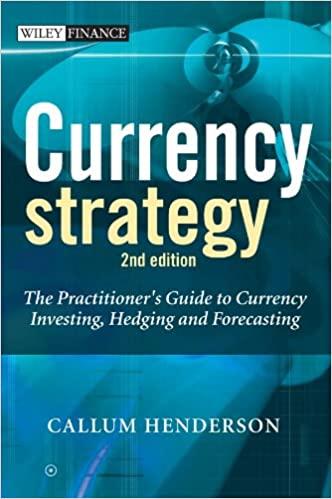Question
CASE STUDY THE DEMISE OF LIBOR? LIBOR is a key reference interest used for pricing variable rate loans in the UK and in other major
CASE STUDY THE DEMISE OF LIBOR?
LIBOR is a key reference interest used for pricing variable rate loans in the UK and in other major markets.
Indeed, the rate is linked to more than $350 trillion in loans around the world (Vaughan and Finch, 2017). However, the rate was subject to rigging or manipulation for a number of years prior to 2012; when the so-called LIBOR Scandal came to light in the years following the GFC, it resulted in a number of reforms.
LIBOR was calculated as the average of interest rates submitted by banks around the world. Banks were required to submit the exact rates they were paying but, as it emerged, some banks were deliberately overstating or understating rates in order to profit from certain trades or to give misleading indications about their financial positions.
Following the scandal, LIBOR has been more tightly regulated with the aim of ensuring that the reference rate reflects actual market conditions. In a move that has caused some concern in the global financial community, the UKs Financial Conduct Authority has decided to require banks to transition towards alternative interest rate benchmarks by 2021.
In the UK, LIBOR will be replaced by SONIA (Sterling Overnight Index Average). In the USA, LIBOR will be replaced by the Broad Treasury Financing Rate (BTFR). Questions still remain, however, about how this will work in practice. Importantly, none of the new reference rates will have the global reach and status as a pillar of the financial system that LIBOR once had (Scaggs, 2017). In the Australian economy, the Bank Bill Swap Rate (BBSW) is the short-term interest rate benchmark that performs a similar function to other published reference rates such as LIBOR (Bank Bill Swap Rate (BBSW), 2018). In Australia, BBSW is administered by the ASX and efforts have been made to assure the confidence of market participants by introducing a new method for calculation. The new methodology came into effect from May 2018 and calculates the benchmark directly from market transactions with a longer rate-set window and involves a larger number of participants. This ensures that the benchmark relates to real transactions at the traded prices. (ASIC and RBA Welcome the New BBSW Calculation Methodology/ Media Releases/ RBA, 2018).
The change in methodology also ensures that BBSW is anchored to observable arms length transactions in an active underlying market and the calculation mechanism is robust to changing market conditions. However, financial analysts predict a drift from BBSW towards risk-free rates (like BTFR) (Debelle, 2016).
Discussion point: What is the importance of ensuring that reference rates reflect actual market conditions?
Step by Step Solution
There are 3 Steps involved in it
Step: 1

Get Instant Access to Expert-Tailored Solutions
See step-by-step solutions with expert insights and AI powered tools for academic success
Step: 2

Step: 3

Ace Your Homework with AI
Get the answers you need in no time with our AI-driven, step-by-step assistance
Get Started


